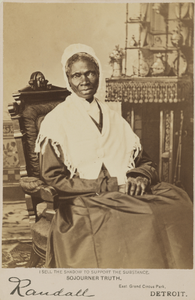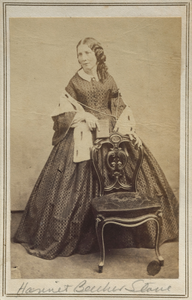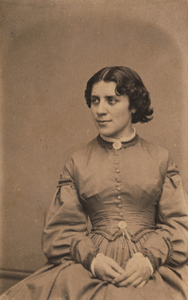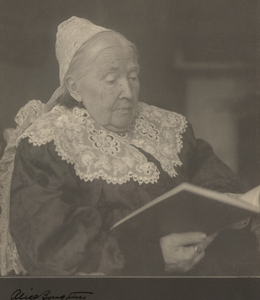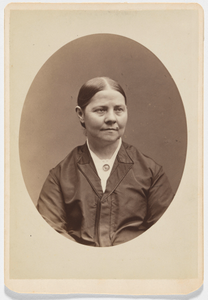Description
Born Dorchester County, MarylandBorn into slavery as Araminta Ross, Harriet Tubman rebelled against servitude from her earliest years, running away as early as age seven. At fifteen, she defied an overseer and was nearly killed when he gave her a "stunning blow to the head." Although the effects of the blow stayed with her throughout her life, Tubman marshaled her resolve and nurtured her anger. In 1844 she married a freedman, John Tubman, and in 1849 she escaped to Philadelphia, discarding her slave name for her mother’s name, Harriet. Tubman became an active "conductor" on the Underground Railroad, guiding escaping slaves to freedom. She made nineteen recorded trips out of the South and was reputed never to have lost a soul. Tubman was active throughout the abolitionist movement and conspired with John Brown about raiding the federal arsenal at Harpers Ferry, although she did not participate.Nacida en Dorchester County, MarylandHarriet Tubman nació esclava, con el nombre de Araminta Ross, pero desde temprano se rebeló contra la servidumbre, intentando huir desde los siete años. A los quince desafió a un capataz y casi muere cuando este le propinó "un tremendo golpe en la cabeza". Aunque los efectos del incidente la acompañaron el resto de su vida, Tubman encauzó su determinación y alimentó su rabia. En 1844 se casó con un liberto, John Tubman, y en 1849 escapó a Philadelphia, cambiando su nombre de esclava por el de su madre, Harriet. Tubman se convirtió en una efectiva "conductora" del llamado "Ferrocarril Subterráneo",...
Image
Printing Out Paper Print
National Portrait Gallery, Smithsonian Institution
Record Contributed By
National Portrait GalleryRecord Harvested From
Smithsonian InstitutionKeywords
- Abolitionist
- Abolitionists
- Cabinet Card
- Design
- Enslaved Person
- Female
- Harriet Arminta Tubman
- Health And Medicine
- Interior
- Interior Decoration
- Military
- Nurse
- Nursing
- Photographic Format
- Portrait
- Portraits
- Reformer
- Reformers
- Scout
- Slaver
- Society And Social Change
- Squyer, H. Seymour
- Tubman, Harriet Arminta
- Women




